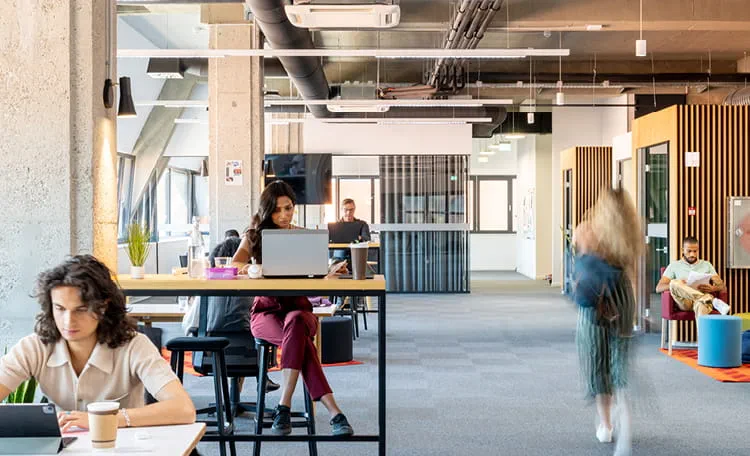Class A Properties Dominate Life Sciences Leasing in 2024
Post-pandemic shifts in work patterns have made it challenging for the leased office sector to attract workers back to the office. However, the life sciences sector requires both in-lab and office presence due to the nature of the work. In the war for life sciences talent, firms have focused on providing attractive workspaces to entice in-person attendance. Amenity-rich spaces with floorplans that foster collaboration and socialization are highly desired in life sciences, just as they are for office occupiers. These trends have driven a growing preference for high-quality, amenity-rich campuses for both office and life sciences.
Class A properties account for 50% of total life sciences inventory in the U.S., closely matching the 51% share of Class A office properties. Lab and cGMP spaces must adapt to newer technologies and evolving employee needs. As science and scientific processes evolve, so should the space around it. Older and outdated spaces can present hurdles to both employees and scientific progress. It’s not surprising that life sciences leasing activity is stronger in Class A buildings. To recruit, retain and encourage employees to return to work, companies are seeking best-in-class environments.
Over the last five years, Class A space has accounted for 69% of all life sciences leasing. Class A leasing year-to-date (January through June 2024) has been even stronger, accounting for 75% of square footage signed. Class A leases tend to be twice the size of those in B and C assets. While lease size has dropped across other property types, Class A life sciences leases have consistently remained around 40,000 square feet (sf) over the past five years. Class A deals transacted so far in 2024 average 39,000 sf.
Class A space is typically priced higher than other classes. With an average gross taking rent of $80.85 per square foot (psf) over the last five years, Class A has received a 48% price premium vs. Class B and C space. While Class B and C offers tenants a significant pricing discount, the operational limitations they impose can offset the cost benefit, especially as these spaces continue to age and pose additional challenges to this segment of the life sciences sector. As leases roll in lower-quality and non-purpose-built facilities, tenants will increasingly migrate to Class A space.
Further pricing stratification can be observed when comparing newer and older Class A properties. Over the past five years, the average gross taking rent for space built or renovated in 2020 or later was $87.25 psf. This is a 12% premium over rents signed for spaces built or renovated before 2020 ($78.05 psf). This premium is more pronounced in recent deals. Life sciences leases for newer Class A space have averaged $102.57 psf so far in 2024. This is a 29% premium to older Class A spaces ($79.50 psf). Newer, turnkey Class A spaces that include higher tenant improvement allowances are typically more in demand among tenants in the market.
The life sciences market is in a building boom with nearly 16 msf of new space expected to be completed this year, offering abundant choices for tenants who are willing to pay a premium for newer space in 2024. This new, high-quality inventory will drive operational efficiencies and performance for life sciences companies by increasing the availability of sustainable, technology-enhanced facilities. With so many options, tenants will need to focus on differentiators, such as location, sponsorship, and leasing flexibility.
An additional 9 msf is due to deliver in 2025, however, with nearly 50% of that space preleased, there will be fewer opportunities to lease brand-new Class A space next year. The construction pipeline for new life sciences inventory has already begun to contract. The amount of brand-new space available for lease will decrease and may potentially result in a larger pricing premium for newer Class A space in the coming years.









